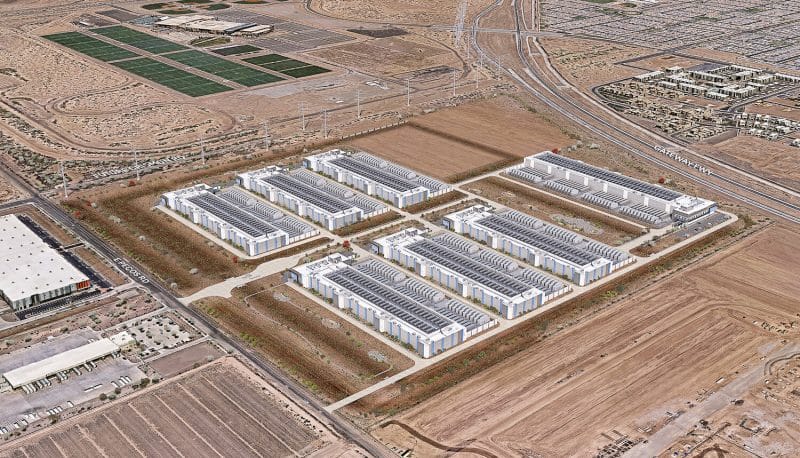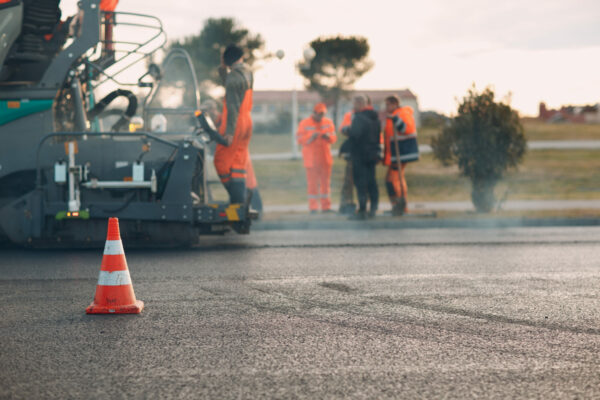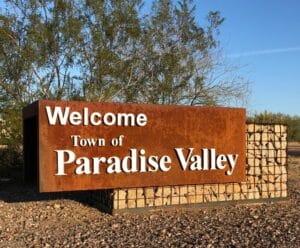
By Jack Fitzpatrick | Cronkite News
The small town of Superior has pinned its livelihood to copper, silver and gold mines for more than a century, but never has it had a prospect like this.
The proposed Resolution Copper mine near this struggling town could be the most productive copper mine in North America, promising $61.4 billion in economic activity over its nearly 60-year life and 1,400 mining jobs at the peak of production.
But those jobs are not likely to be the jobs that built Superior and other towns in Arizona’s historic Copper Corridor, where culture and economies are closely tied to the copper-mining industry. The generations of traditional mining experience in Superior may not be of much use as Resolution, like mines around the world, turns to robotics.
“We’ve reached a new world when it comes to mining,” said Thomas Power, an economics professor at the University of Montana who wrote a report for opponents of the mine.
Arizona is part of that new world, with the copper industry becoming markedly less labor-intensive in recent decades. From 1974 to 2003, the number of workers needed to produce 1,000 tons of copper fell 80 percent, according to Power’s report, commissioned by the San Carlos Apache, who oppose the mine on religious grounds.
Copper-mining employment dropped dramatically in Arizona, too, from 28,000 workers in 1974 to 12,000 in 1997, despite a 75 percent increase in copper production during the same period, when output went from 805,000 tons to 1.4 million tons, Power’s report said.
And at 7,000 feet underground, the Resolution mine will “push the envelope of technology,” said Mary Poulton, head of the University of Arizona’s Department of Mining and Geological Engineering.
Poulton said the Resolution project will probably require a higher level of education from its workers than earlier mines did. Where miners used to come straight out of high school, they will now probably need an associate’s degree, she said.
Most of the jobs at the mine will be “skilled technical jobs” like diesel mechanics, electricians and instrument technicians, said Vicky Peacey, senior manager of environmental and external affairs for Resolution Copper. Those positions require specific skills, which is why the company is investing in math and science programs for schools in Superior, she said.
Resolution insists that 1,400 jobs will be created at the mine. But given the new face of mining jobs, some local officials worry that even a historically large mine like Resolution may not save Superior from the grim economic fate other mining towns have met.

Gilbert Aguilar, a Superior town council member and former copper miner, said he is not worried about the number of jobs at the mine – just who gets the jobs and where they live. He expects very few of the jobs to go to Superior residents, whose mining experience may not translate to the technologically sophisticated Resolution mine.
“You didn’t have to be smartest person in the world to get a job,” in the mines before, when mining didn’t take much education or even a proficiency in English, Aguilar said. “You needed to have a strong back.”
Opponents of the mine have seized on the question of whether it will benefit Superior’s blue-collar workforce, as they try to block a federal land-swap that would give Resolution ownership of land that is currently part of Tonto National Forest. Congressional bills allowing the land-swap have stalled several times in the last decade, as conservationists have pushed to protect the area and the San Carlos Apache argued the land is sacred. A House committee passed the bill in May, but the measure has since stalled in the full House.
Aguilar said he doesn’t oppose the mine, but wants to make sure it benefits the town.
The town council, which had previously supported the mine, voted in February to pull out of an agreement with Resolution. And in August, the council voted to withdraw its support for the land-swap bill which “does not include any benefit to our town” as currently written, saying it wanted answers to questions and some written assurances.
Aguilar said he expects Resolution jobs to be filled by outsiders, who he thinks are unlikely to move to Superior because of its lack of amenities. Miners will probably commute from the Phoenix suburbs about 30 minutes away, said Aguilar, adding that it seemed only a handful of employees lived in town during Resolution’s pre-mining work.
Despite his doubts about jobs, Aguilar said he would still support the mine if the town can annex some of the land so that Resolution pays property taxes. The company already pays the town $100,000 a year, but that figure would likely be in the millions if the site of the mine were within the town limits, Aguilar said.
If miners in Superior are left behind as the industry moves forward, Aguilar said he wants them to benefit in some way.
“Maybe we can fix the roads, fix the sidewalks,” he said. “We have to do what’s right for the town.”
The challenge faced by Superior is not new to mining towns. Manny Armenta, a spokesman for the United Steelworkers, said mining communities often struggle to gain new residents when a mine opens, because the towns lack amenities that would make workers want to live there. He agreed that many Resolution employees will likely commute from the Phoenix suburbs.
“Small mining towns don’t have the big stores, the grocery stores, the Safeways and Fry’s,” Armenta said.
Similarly, when coal mining underwent a wave of mechanization in the 1960s and ’70s, communities in Appalachia struggled as jobs in the mines shrank, said Phil Smith, a spokesman for the United Mine Workers of America. Relying on mines for jobs can be dangerous to a town when an industry quickly becomes more efficient, he said.
“There are whole communities throughout southern Pennsylvania and West Virginia that are just shells of what they used to be,” he said.
In Australia, mining communities are losing jobs as mines move toward automation and the workers move away from small towns into more urban areas, according to a February study by the University of Queensland.
The study cited Rio Tinto and BHP Billiton – Resolution’s parent companies – as pushing heavily toward automating mines. Both companies have driverless trucks and plans for remote-controlled blast-hole drills, rock breakers and shovels.
Both companies also have remote operations centers in Perth, where workers control operations in mines up to hundreds of miles away. Those centers inspired Rep. Raul Grijalva, D-Tucson, to unsuccessfully try to amend the House land-swap bill to require that Resolution place any remote operations center in Superior or an adjacent Copper Corridor town. Resolution has said it has no plans for a remote operations center, and its official mining plan of operations does not include mention of one.
But the Queensland report said that while technological developments have cut jobs in Australia, they have also kept workers out of harm’s way, as miners are not exposed to risks such as landslides and extreme fatigue. And the less physical nature of the work may open up opportunities at mines for women and older workers, it said.
At the Resolution mine, workers will likely use tele-operated equipment, running underground machinery from a safe distance, Poulton said.
For miners in Superior, that is a mixed blessing, Aguilar said. Mining jobs used to be more dangerous, but they paid well and were available to anyone who was willing to work hard, he said.
“Was it dangerous down there?” he asked. “Yeah, but that’s the life we chose.”







